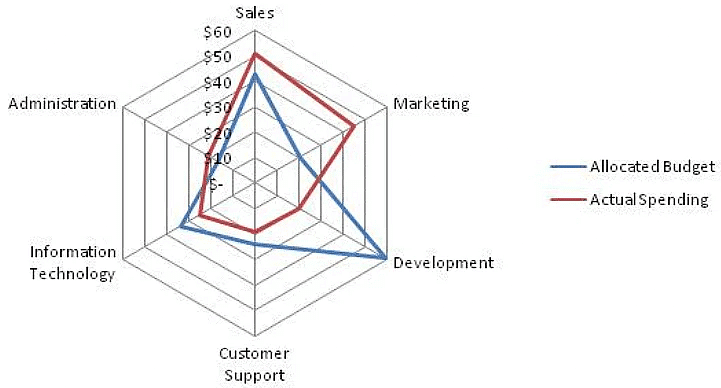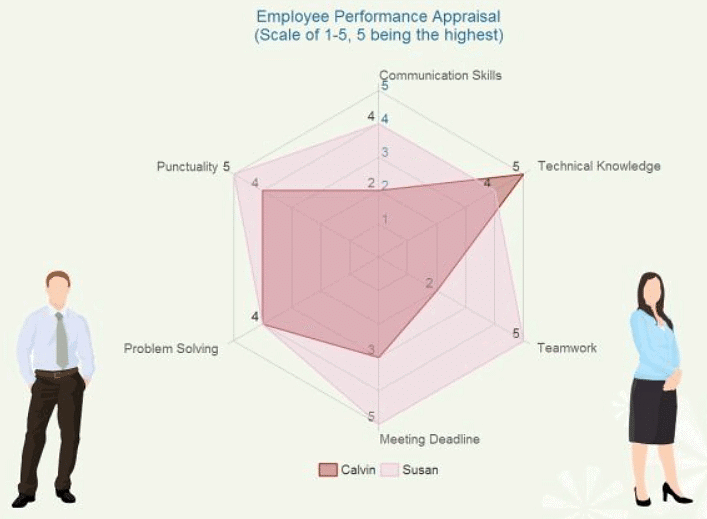Banking Exams Exam > Banking Exams Notes > Radar Graphs
Radar Graphs - Banking Exams PDF Download
Introduction
- Radar chart is a graphical way to compare data by displaying data in a "web-like" form looking like spider web. So it is also known as spider chart/graph. Usually, it is applied to evaluate multiple alternatives based on multiple criteria.
- Radar charts, sometimes known as spider, start or web charts, are a two-dimensional chart type designed to plot one or more series of values over multiple common quantitative variables by providing an axis for each variable, arranged radially as equi-angular spokes around a central point. The values for adjacent variables in a single series are connected by lines, and, frequently, the polygonal shape created by these lines in filled with a colour. Beyond this there are many subtle variations that have different consequences with respect to the efficacy of the chart.
- These variations will be covered at appropriate points in the following critique.

Benefits of Using Radar Charts
- They provide a very easy way to see if someone is competent or not.
- By overlaying multiple "webs" on a radar chart, you can do visual comparisons against reference data sets very easily. For example, you could compare a student to his classmates by overlaying the average radar chart from the entire class on top of his personal radar chart.
- They are great input in the development of learning plans
- Weaknesses or strengths in performance are easy to see on radar charts. When someone is far above or below a standard, you will be able to observe a clear "balloon out" or "cave in" pattern.
- This makes it easier for time-crunched advisors to find and address issues when they're working with students. It also makes it easy to identify performers who stand out from the crowd. Those top performers may be able to help others in areas they are particularly good at. What is more, it may highlight trainees who should spend more time in training to catch up with other.
Radar Charts for Problem Solving
- Radar charts are widely used in many fields, including education, business or other presentation. Here you can learn how to use a Radar Chart as a problem-solving technique, being especially useful in performance measurement. To solve a problem, sometimes you need to learn or analyze the problem comprehensively, through facts or figures. How can you dig out more useful information from the dry number? Radar chart is a great helper for you to make static data more meaningful and useful. It helps you compare and clarify so that you can see the differences and deficiencies. See how you can solve problems by radar chart through one real case.
Problem Solving Example: Performance Evaluation Radar Chart

For this example, possible analyses might include:
- Susan is better in punctuality, communication skills teamwork and meeting deadline.
- Calvin's technical knowledge is better than Susan.
- The largest difference is found in teamwork.
- Susan's performance is better as a whole.
- Calvin ought to improve his soft skills to be more competent.
The document Radar Graphs - Banking Exams is a part of Banking Exams category.
All you need of Banking Exams at this link: Banking Exams
Related Searches














